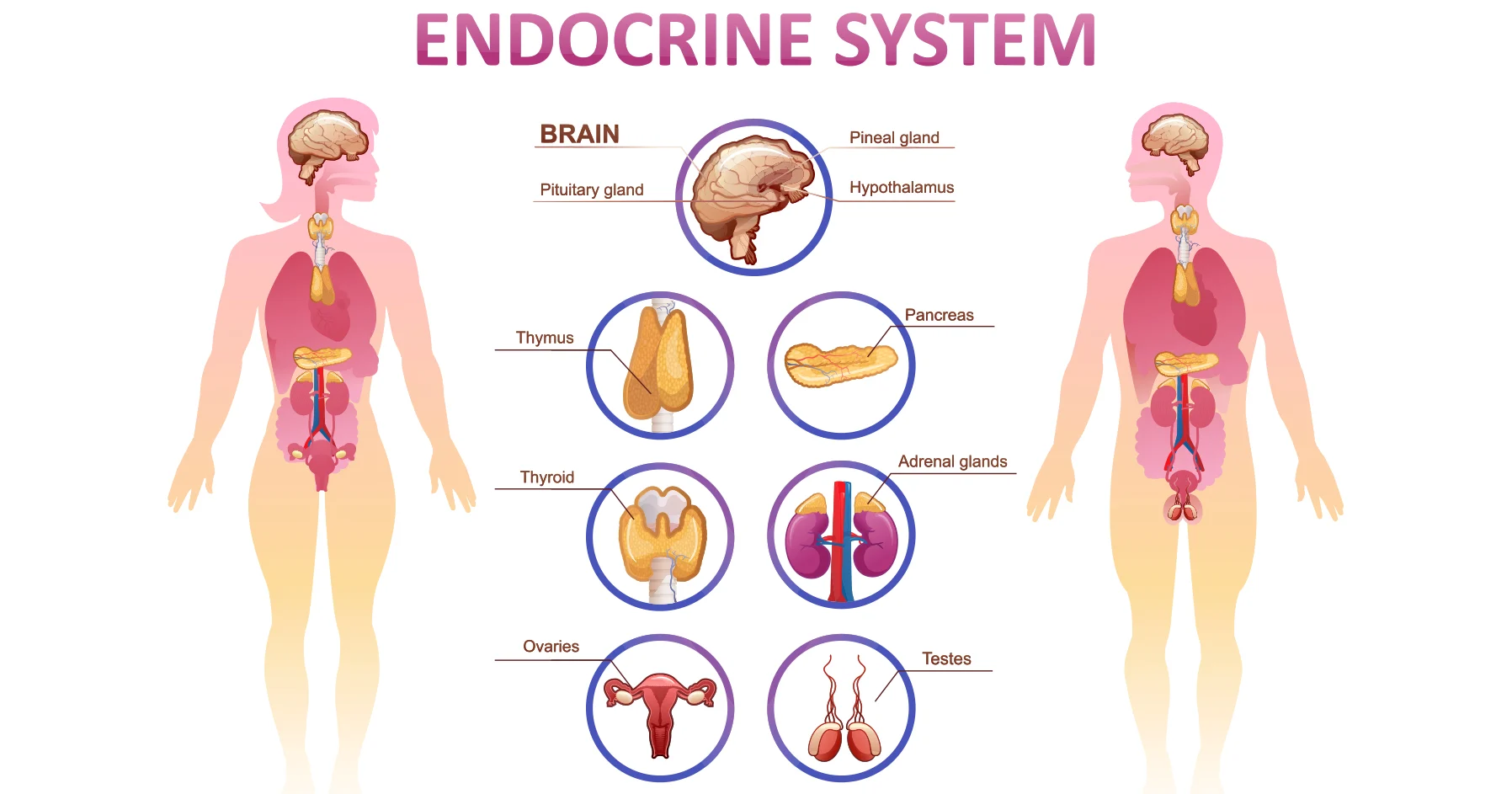


The endocrine system is made up of the endocrine glands that secrete hormones. Although there are eight major endocrine glands scattered throughout the body, they are still considered to be one system because they have similar functions, similar mechanisms of influence, and many important interrelationships.
Some glands also have non-endocrine regions that have functions other than hormone secretion. For example, the pancreas has a major exocrine portion that secretes digestive enzymes and an endocrine portion that secretes hormones. The ovaries and testes secrete hormones and also produce the ova and sperm. Some organs, such as the stomach, intestines, and heart, produce hormones, but their primary function is not hormone secretion.
The endocrine system is responsible for regulating a range of bodily functions through the release of hormones.
Hormones are secreted by the glands of the endocrine system, traveling through the bloodstream to various organs and tissues in the body. The hormones then tell these organs and tissues what to do or how to function.
Some examples of bodily functions that are controlled by the endocrine system include:
A gland is an organ that creates and releases substances that the body needs to function. There are two types of glands:
The glands of the endocrine system are where hormones are produced, stored, and released. Each gland produces one or more hormones, which go on to target specific organs and tissues in the body.
The glands of the endocrine system include the:
Some endocrine glands also have non-endocrine functions. For example, the ovaries and testes produce hormones, but they also have the non-endocrine function of producing eggs and sperm, respectively.
| Hormone | Secreting gland(s) | Function |
|---|---|---|
| adrenaline | adrenal | increases blood pressure, heart rate, and metabolism in reaction to stress |
| aldosterone | adrenal | controls the body’s salt and water balance |
| cortisol | adrenal | plays a role in stress response |
| dehydroepiandrosterone sulfate (DHEA-S) | adrenal | aids in production of body odor and growth of body hair during puberty |
| estrogen | ovary | works to regulate the menstrual cycle, maintain pregnancy, and develop female sex characteristics; aids in sperm production |
| follicle-stimulating hormone (FSH) | pituitary | controls the production of eggs and sperm |
| glucagon | pancreas | helps increase levels of blood glucose (blood sugar) |
| insulin | pancreas | helps reduce your blood glucose levels |
| luteinizing hormone (LH) | pituitary | controls estrogen and testosterone production as well as ovulation |
| melatonin | pineal | controls sleep-wake cycles |
| oxytocin | pituitary | helps with lactation, childbirth, and mother-child bonding |
| parathyroid hormone | parathyroid | controls calcium levels in bones and blood |
| progesterone | ovary | helps prepare the body for pregnancy when an egg is fertilized |
| prolactin | pituitary | promotes breast-milk production |
| testosterone | ovary, teste, adrenal | contributes to sex drive and body density in males and females as well as development of male sex characteristics |
| thyroid hormone | thyroid | helps control several body functions, including the rate of metabolism and energy levels |
